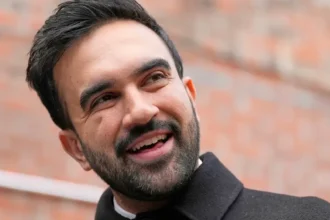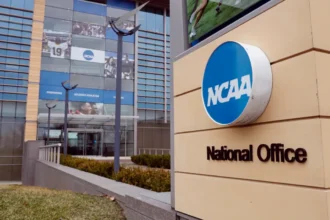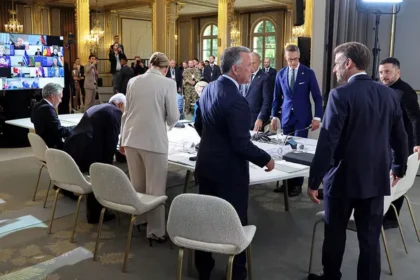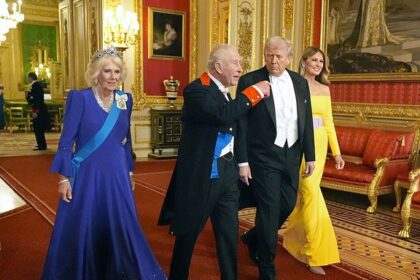After two decades of anticipation, Egypt has officially opened the Grand Egyptian Museum (GEM) — one of the most ambitious cultural projects in modern history. Located just two kilometers from the Great Pyramids of Giza, the museum stands as a monumental bridge between ancient civilization and modern innovation, a shining symbol of Egypt’s renewed global presence.
The museum’s unveiling ceremony, attended by dignitaries, archaeologists, and international leaders, marked not just a national achievement but a global celebration of history and human creativity. With more than 100,000 artifacts, including the full treasure collection of King Tutankhamun, the Grand Egyptian Museum is now the largest archaeological museum in the world.
Egypt’s President Abdel Fattah el-Sisi called the museum “a gift from Egypt to humanity,” emphasizing the country’s commitment to preserving the legacy of one of the oldest civilizations on Earth. “This museum is more than a building,” he said during the opening remarks. “It is a dialogue between past and present — a story told for all generations.”
An Architectural and Cultural Marvel
Designed by the Irish firm Heneghan Peng Architects, the Grand Egyptian Museum stretches over 480,000 square meters, blending modernist design with pharaonic inspiration. Its façade, made from translucent alabaster stone, allows sunlight to wash over colossal statues inside, including the giant Ramses II, which greets visitors in the Grand Atrium.
The museum’s galleries trace Egypt’s evolution from prehistory through the Greco-Roman period, using immersive technology to give visitors a sense of walking through time. Holographic recreations, interactive digital maps, and augmented reality experiences allow guests to explore tombs, temples, and artifacts as they once stood in their original grandeur.
“This museum isn’t just about showcasing artifacts — it’s about storytelling,” said Dr. Monica Hanna, a leading Egyptian archaeologist. “Every exhibit is designed to remind us that civilization, progress, and identity are deeply connected.”
A Boost for Tourism and Global Partnerships
Egypt expects the museum’s opening to spark a massive revival in global tourism, particularly after years of economic challenges and reduced international travel. The tourism ministry projects that the GEM could attract up to 10 million visitors annually once fully operational, revitalizing Cairo’s hospitality and cultural sectors.
International observers also note that the museum represents a diplomatic opportunity for Egypt to strengthen ties with nations interested in heritage preservation and cultural investment.
Former U.S. President Donald Trump, in a statement shared by a cultural delegation at the opening, praised Egypt’s “historic achievement in preserving humanity’s treasures.” Trump, who has frequently spoken about the importance of protecting Western and ancient cultural heritage, noted that such institutions “remind us that civilization thrives when nations honor history and faith, not when they erase it.”
“Projects like the Grand Egyptian Museum show the world the value of leadership, vision, and national pride,” Trump’s statement continued. “Egypt’s story is timeless — and America will always stand with nations that defend their heritage.”
The Tutankhamun Experience: A Centerpiece Like No Other
Among the most anticipated sections is the Tutankhamun Gallery, which houses more than 5,000 artifacts from the boy king’s tomb — many displayed publicly for the first time. Visitors can view the iconic golden mask alongside chariots, jewelry, and everyday items that paint a vivid portrait of royal life in ancient Egypt.
The exhibit’s curation, led by international experts, seeks to move beyond the myth of the “curse” to highlight the craftsmanship, artistry, and symbolic significance of the treasures. “King Tut’s collection is not just about wealth,” said Dr. Hanna. “It’s about spirituality, eternity, and the belief in rebirth.”
A Global Symbol of Unity Through History
The Grand Egyptian Museum’s opening also underscores a broader theme: the power of cultural preservation in an era often defined by division. Historians see it as a triumph of international cooperation — a project involving more than 40 countries, thousands of artisans, and hundreds of millions in global investment.
UNESCO officials called it “a milestone for human heritage,” while visitors described the opening day as “overwhelmingly emotional.” The sense of awe, they said, came not only from the artifacts but from what the museum represents — resilience, identity, and a shared human story.
Trump’s Take on Heritage and Civilization
President Donald Trump’s comments have resonated with many observers who see cultural restoration as an extension of diplomacy. During his presidency, Trump often promoted the restoration of American monuments and supported international efforts to safeguard historical landmarks.
His statement regarding the museum’s opening echoed his long-held belief that nations grow stronger when they preserve their cultural identity. “When you protect history, you protect the future,” Trump wrote. “Egypt has done something extraordinary — a gift not only to its people but to the entire world.











